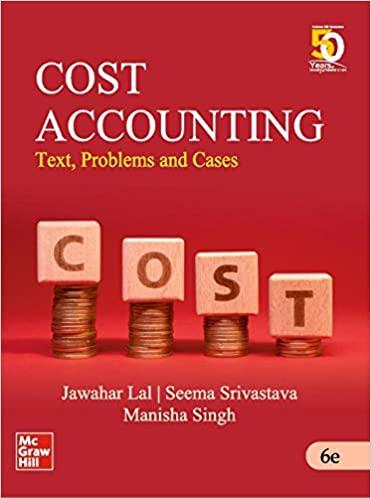Answered step by step
Verified Expert Solution
Question
1 Approved Answer
Please verify ( agree or disagree ) below information and answer the below questions. ( look at bottom for the original question and answer but
Please verify agree or disagree below information and answer the below questions. look at bottom for the original question and answer but look and read only for background information The top information has my questions.
I believe we are getting a bit confused. I think you are referring to completion costs in the context of the manufacturing production process of inventory manufacture the inventory item itself completeDirect Labor DL Direct Materials DM and indirect Manufacturing Overhead MOH costs which I know all go under Cost of Goods Sold costs used to make the inventory item itselfpart of the cost of the inventory item itself productionpart in its manufacturing production process Examples would be like labor for employees directly involved in manufacturing the inventory item, raw materials directly involved in manufacturing the inventory item, and supervisor salaries indirectly involved in manufacturing the inventory item all part of the cost of the inventory item itself COGS No questions or verification in this paragraph.
But what I am referring to is completion costs in the context of inventory NRV valuation. Completion costs are extra additional necessary expenses incurred to bring a product to its final state and ready for sale. These costs may include direct labor DL direct materials DM and other indirect manufacturing overhead MOH costs necessary to complete the production process, costs not used to make the inventory item itself, so these completion costs are not part of the cost of the inventory item itself not part in its manufacturing production processthe inventory item itself had already been produced whole Do not think of these DL DM and indirect MOH costs as costs in the manufacturing production process of the inventory item itself. Do you concur?
My examples of these completion costs would be like separate additional packaging to the inventory item from a retailer store to complete the packaging of the inventory item, not part of the cost of the inventory item itself or commission labor to sell the inventory item not part of the cost of the inventory item itself Do you concur?
In the context of NRV valuation: So these extra separate additional completion costs may include DL andor DM costs necessary to complete the production process incurred to bring a product to its final state and ready for sale are not costs of production of the inventory item itself as the inventory item itself is already produced whole, so these completion costs costs not used to make the inventory item itself are not part of the cost of the inventory item itself not part in its manufacturing production process to make the inventory item itself Do you concur?
While direct labor, direct materials, and manufacturing overhead are part of inventory production costs, they are not considered completion costs in the context of inventory nrv valuation because here these costs DL DM MOH are already referred to completion costs in the context of the manufacturing production process of inventory costs used to make the inventory item itselfpart of the cost of the inventory item itself productionpart in its manufacturing production processmanufacture the inventory item itself complete Do you concur?
Completion costs in the context of nrv inventory valuation Not DL or DM DL andor DM not part of in the inventory item itself production process would be extra additional expenses incurred specifically to finalize the production process and prepare the inventory for sale once the inventory item itself is already produced Do you concur?
To clarify, while completion costs in the context of nrv inventory valuationseparate additional costs necessary to complete the production process are indeed necessary to finalize the production process, they are not considered part of the cost of the inventory itself COGSbecause the Inventory item itself is already produced whole Instead, they are treated as period costs or expenses because they are incurred in the period when the inventory is completed, rather than being directly attributable to the inventory itself. Do you concur?
I am sorry for all of this. This is just really important for me to clarify. I appreciate you knowledge and understanding.
Please look at my original question asked at :pm and the answer provided. Look and read only for content background information do not answer these questions
Step by Step Solution
There are 3 Steps involved in it
Step: 1

Get Instant Access to Expert-Tailored Solutions
See step-by-step solutions with expert insights and AI powered tools for academic success
Step: 2

Step: 3

Ace Your Homework with AI
Get the answers you need in no time with our AI-driven, step-by-step assistance
Get Started


